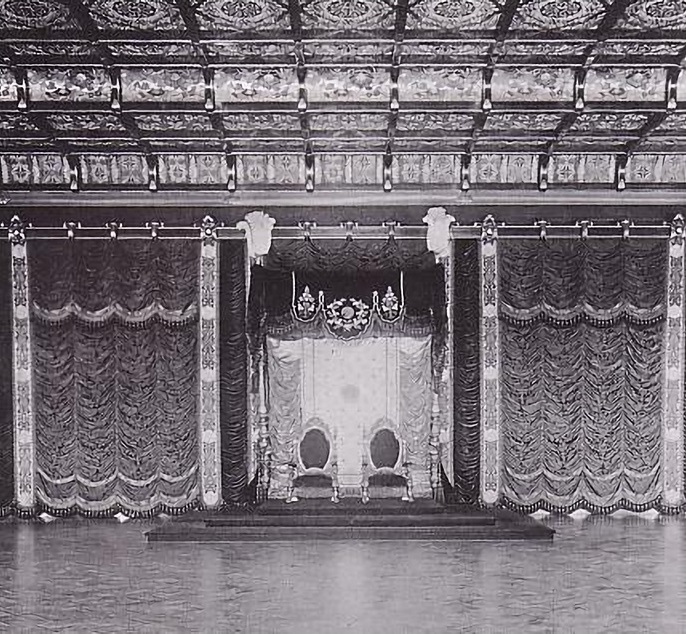
The Chrysanthemum Throne of Japan
Japan is said to have the oldest continuous hereditary monarchy in the world. The Chrysanthemum Throne is a term used to embody the Japanese monarchy and the legal authority for the existence of the Japanese government. Japanese legends say that the monarchy of Japan was founded by Emperor Jimmu in 660 BC, though extant historical records go only as far back as the early 4th century when Emperor Ojin ruled Japan.
The Chrysanthemum Throne can also rhetorically refer to the head of state as well as the institution of the Japanese monarchy. The 16-floret chrysanthemum flower variety (Ichimonjiginu) is the crest and official seal of the Emperor.
The Imperial throne of Japan is similar to the rule of agnatic seniority, a patrilineal principle of inheriting the throne where a monarch’s children can only succeed when males of the older generation have already been exhausted. In theory, any male or female with patrilineal lineage to previous Japanese monarchs who are descendants in a direct male line of the very first Emperor Jimmu Tenno can inherit the Chrysanthemum Throne. But in practice, succession to the throne was given to the first-born male offspring of a preceding male monarch, followed by his brothers, sons, and other males of the immediate male-line family, and ultimately representatives of the Shinnoke (four cadet branches of the Imperial Household) houses.
Woodblock print of the first Emperor Jimmu by Ginko Adachi.
The Prussian model of imperial succession was adapted by the Japanese after the Meiji restoration period. This principle clearly excluded Imperial females from the claim to succession of the Chrysanthemum Throne. In an effort to modernize Japan, polygamy was banned in securing the throne.
Further restrictions were also imposed after World War II where only the closest relatives of the then Emperor Hirohito (children and descendants, siblings and their descendants) could be part of the official Imperial family and have a claim to succession. Emperor Akihito is currently Japan’s emperor. His sons are Crown Prince Naruhito and Prince Akishino.
Emperor Hirohito in dress uniform.
Aunt to the current Emperor Akihito, the late Princess Takamatsu, was a strong advocate of implementing the indigenous customs of succession where females can succeed to the throne as long as she holds precedence in seniority or proximity within the patrilineal kinship. This change could mean that a new dynasty could take over the Chrysanthemum Throne.



